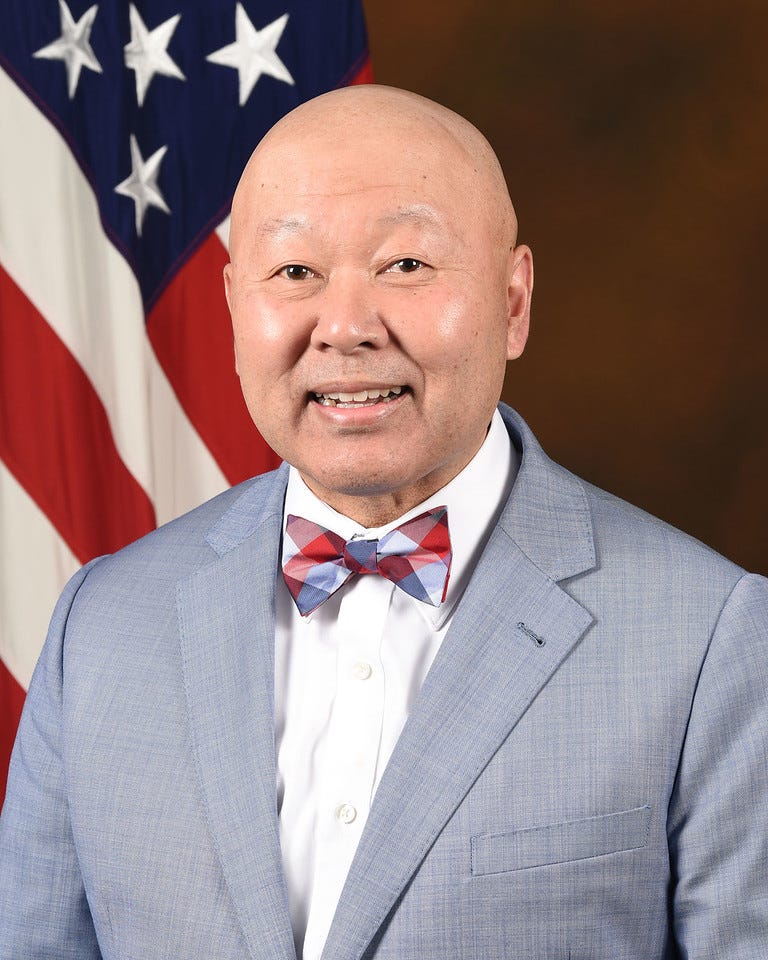As an Amazon Associate I earn from qualifying purchases
Think about your favorite novel that you read in school. Victor Hugo’s Les Miserables? Jane Austen’s Pride and Prejudice? Miguel de Cervantes’ Don Quixote? Charles Dickens’ Great Expectations? Now imagine if all the wonder and wisdom of those great works was closed off to you because your school failed to teach you to read.
A common characteristic of many novels that make the “all-time greats” list is their significant length. If one looks up the Penguin editions of the above-mentioned works one would find Les Miserables at 1,456 pages, Pride and Prejudice at 448 pages, Don Quixote at 1,072 pages, and Great Expectations at 544 pages.
My own favorite novel is J.R.R. Tolkien’s The Lord of the Rings. My copy, which includes all three parts of Tolkien’s classic in one volume, runs more than 1,000 pages.
While Sir Peter Jackson’s acclaimed movie trilogy of The Lord of the Rings naturally focused on character development, inter-personal relationships, and action, Tolkien used words to paint pictures so that individual readers could imagine the world of Middle Earth, rather than have CGI show them one person’s version of it. For instance, here is one of my favorite passages:
But against Minas Tirith was set another fortress, greater and more strong. Thither, eastward, the grinning gates of Minas Morgul, and the haunted Mountains, and it looked upon Gorgoroth, the valley of terror in the land of Mordor. Darkness lay there, under the Sun. Fire glowed amid the smoke. Mount Doom was burning, and a great reek rising. Then at last his gaze was held: wall upon wall, battlement upon battlement, black, immeasurably strong, mountains of iron, gate of steel, tower of adamant, he saw it: Barad-dur, Fortress of Sauron. All hope left him.
The beauty of Tolkien’s writing makes it absolutely heartbreaking to realize that a large proportion of America’s young people cannot read or understand these lines.
In my recent book The Great Classroom Collapse, which investigates the reasons for the collapse of reading and math skills among American children, I interviewed a California high school teacher named Christy Lozano.
According to Lozano, “A lot of these kids are coming out of high school with a fifth-grade reading level.”
Virginia high school English and journalism teacher Shelly Norden told me, “I was getting students in high school that if I asked them to pick an adjective or an adverb in a sentence, they couldn’t do it.” She observed, “writing was in big decline, and reading, too.”
It is important to understand that this implosion of reading skills is not limited simply to low-income students or non-English-fluent children.
On the 2022 National Assessment of Educational Progress, often referred to as the nation’s report card, seven out of 10 eighth graders failed to score at the proficient level on the reading exam. Such a high non-proficiency rate means that a lot of middle-class and more affluent students are having trouble reading, too.
And it is not just public schools where students are having reading problems.
I interviewed Rebeka Sinclair, a mom who had sent her children to an expensive private school in the Bay Area in Northern California. Despite the high tuition that parents paid for their children to attend the school, many students could not read well.
“So after paying an arm and a leg for tuition,” she said, parents would be forced to pay for extra tutoring for their children. She said, “a lot of them would pay over $10,000 for a very intensive reading program over the summer.”
“So they were spending so much money on the education of their children,” she observed, “and they had to supplement to actually give their kids an appropriate reading curriculum.” “It was so shocking to me,” she said.
She remembered one wealthy couple—both were tech entrepreneurs—“and two out of their three kids at this fancy private school require $10,000 to $15,000 intensive reading programs because the private school is not able to teach their kids to read.”
She knew a billionaire in San Francisco whose children “went to these San Francisco private schools and they all required intensive reading support outside school.”
Family affluence did not prevent children from having trouble reading. Rather, she noted, “when you think about the people that I knew who were paying for these supplementary programs, it’s so indicative that it really points to the fact that the instruction was flawed.”
Indeed, if there is one thing we know about reading it is that there are proven effective ways to teach children to read and there are proven ineffective methods.
The National Reading Panel, which was established by the federal government in the late 1990s, reviewed more than 100,000 studies on reading and selected the most rigorous of these for analysis. The Panel concluded that the best approach to reading instruction incorporated explicit instruction in phonemic awareness, systematic phonics instruction, methods to improve fluency, vocabulary building, and ways to enhance comprehension. These elements comprise what is called the science of reading.
Phonemic awareness involves students’ awareness of the sounds made by spoken words, while phonics systematically maps those speech sounds onto letters and letter combinations, which many people remember as the “sounding out” method of reading instruction.
Unfortunately, rather than use the proven science-of-reading method to teach children to read, many schools use popular but empirically unsupported progressive techniques such as the so-called three-cueing method.
According to the National Council for Teacher Quality, under the three-cueing instructional approach, “children who encounter a word they do not recognize are instructed to use one of three strategies: ‘guess what the word might be’ based on context; ‘look at the picture to help guess what the word might be;’ and ‘look at the first letter to help guess what the word might be,’ and if the guess makes sense, then check to see if it ‘looks right.”
Rebeka Sinclair said that her children’s school used this method.
“When my daughter was in kindergarten and first grade,” she recalled, they used a balanced literacy program,” with “teachers teaching children how to use the cueing approach—instead of asking kids to sound out words they would focus on looking at clues to identify words.”
She explained: “Okay, we’re stumbling on a word. What do the pictures teach us? What do you think this word means based on what you see? And the teachers would actually promote this methodology to parents. We weren’t sounding out words. We were looking for clues to identify words.”
However, as the NCTQ points out, “Despite widespread use by K-2 and elementary special education teachers, reading experts discourage guessing techniques because they represent lost opportunities to help children practice decoding [i.e., pronouncing], and represent an ineffective strategy for reading advanced texts.” Advanced texts include novels like The Lord of the Rings, Les Miserables, and other great novels.
The result of using ineffective progressive reading methods has been tragic for many of America’s children.
I interviewed Missy Purcell, a former teacher in Georgia, who used balanced literacy’s three-cueing technique in her fifth-grade classroom to disastrous effect.
“I call it ‘limp through a book,’” she said. Students would “look at the first letter,” but then, “look at the picture” and answer: “Is that really happening? Is that really that word? Did that make sense?”
“When I was working with low-level [reading] kids,” she said, “they were reading books with pictures, which is a little embarrassing when you are in the fifth grade.”
She said, “I can tell you the names of kids just about every year that I taught that couldn’t read.”
After her students left her class she followed them on social media and said that there was one girl who was now in a dead-end job not making a lot of money, and she asks: “Did I play a part in that? I didn’t help her and she left the fifth grade and went to middle school and she couldn’t read.”
Because K-12 schools have done such a poor job teaching kids to read, universities are now finding that their incoming students are unable to do college-level work.
Rose Horowitch, writing recently in The Atlantic, found, “Many students no longer arrive at college—even highly selective, elite colleges—prepared to read books.”
She cited Columbia University literature professor Nicholas Dames who observed that two decades ago his students had no problem engaging in sophisticated discussions of Pride and Prejudice, but now his current students complain about the reading load and “struggle to attend to small details while keeping track of the overall plot.”
Such poor reading ability is no surprise given that one of his students told him that she had never been required to read an entire book in high school and had simply been assigned excerpts, poetry, and news articles.
The chair of Georgetown University’s English Department, Daniel Shore, said, “his students have trouble staying focused on even a sonnet.”
But there is hope that change is coming.
Both red and blue states are starting to enact laws that require that the science of reading be included in both teacher-training programs and in school curricula.
In New York, the enacted 2025 fiscal-year budget includes funding for Democrat Governor Kathy Hochul’s Back to Basics Initiative to improve reading proficiency. The budget will allot $10 million to train 20,000 teachers in instructional practices based on the science of reading.
In addition, the New York State Education Department will provide instructional best practices grounded in the science of reading to school districts by the beginning of 2025. School districts will be required to annually review their curriculum and instructional practices for alignment with those issued by the Department.
In Indiana, starting with the 2024-25 school year, schools had to begin implementing the science of reading in the classroom. According to the new law’s legislative digest, schools “(1) shall adopt curriculum or supplemental materials for reading that are aligned with the science of reading and to the student's reading proficiency; and (2) may not adopt curriculum or supplemental materials for reading that are based on the three-cueing model.”
The law also “requires the department to develop guidelines for science of reading integration into teacher preparation programs (and m)akes changes to the education law concerning the science of reading and teacher preparation and licensing requirements.”
Republican State Representative Jake Teshka, author of the Indiana law, said that requiring the science of reading in the classroom is vital because, ‘Kids that don’t know how to read or aren’t reading at a proficient level by third grade are exponentially more likely to drop out.”
Implementing a phonics-based, science-of-reading approach to teaching students has had a dramatic effect in states that have made the switch.
When Mississippi made the change, the NCTQ noted, “the state saw fourth grade NAEP scores rise dramatically, including for historically marginalized groups such as Black and Hispanic students.”
These changes cannot happen fast enough. Think of all the joy and wonderment that young people are missing today. Students can’t laugh and enjoy Tolkien’s hobbits musing about their average day’s dining schedule of breakfast, second breakfast, elevenses, luncheon, afternoon tea, dinner, and supper if they can’t even read the menu of McDonalds.
Lance Izumi is senior director of the Center for Education at the Pacific Research Institute. He is the former president of the Board of Governors of the California Community Colleges and is the author of the new PRI book The Great Classroom Collapse: Teachers, Students, and Parents Expose the Collapse of Learning in America’s Schools.



